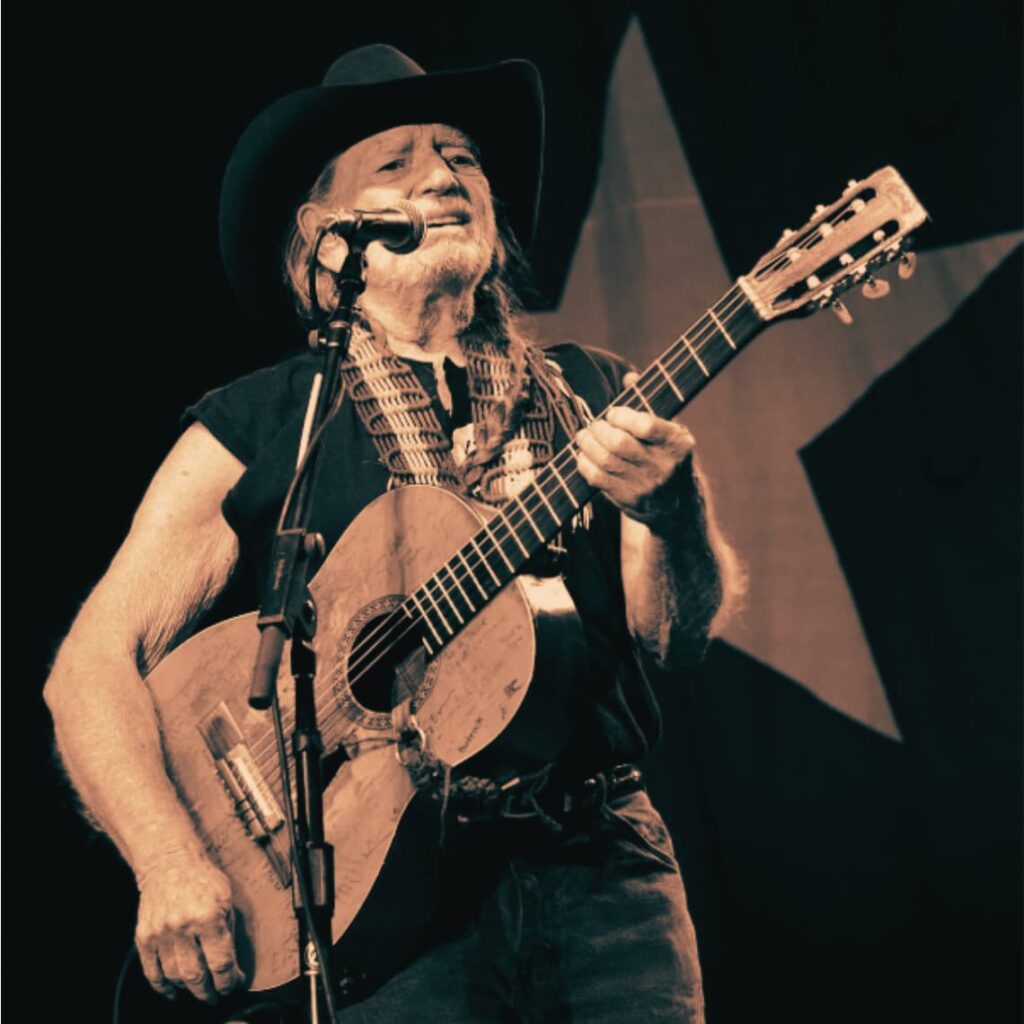
“Night Life”: The Melancholy Anthem of Solitude and the Neon Glow
Ah, the late 1950s and early 1960s. A time of shifting sands in American culture, of nascent rock and roll rumbling beneath the surface, but also a period where the blues and country, in their most unadulterated forms, still held a profound sway over the hearts of many. It was in this fertile, slightly melancholic ground that a song like “Night Life” truly took root, a timeless lament that would eventually become synonymous with its most iconic interpreter, Willie Nelson.
Let’s cast our minds back to the moment it first touched the airwaves. While it might feel like an eternal part of Willie Nelson‘s repertoire now, “Night Life” wasn’t initially his hit. The song was written by Willie Nelson himself, along with Walt Breeland and Paul Buskirk, and first released by Willie Nelson in 1960. However, it was a version by Rusty Gabbard that initially gained some traction. For Willie Nelson‘s own rendition, it didn’t exactly storm the charts upon its initial release. In fact, it was quite a slow burn. The specific chart position of Willie Nelson‘s original 1960 recording is a bit elusive in the major national charts of the time, often overshadowed by the later success of the song. It was more of a regional hit and a beloved staple in juke joints and honky-tonks before it truly became a mainstream success through subsequent recordings and Willie Nelson‘s enduring legacy.
But the real story, the pulsating heart of “Night Life,” lies not in its immediate chart performance, but in its very genesis. Imagine a young Willie Nelson, then a struggling songwriter and musician, navigating the smoky, neon-lit landscape of Fort Worth, Texas. He was reportedly working as a door-to-door encyclopedia salesman by day and playing music in dimly lit clubs by night. This was a man intimately acquainted with the shadows, the quiet despair that can settle in when the sun goes down and the revelry begins for others, while for some, it’s just a deeper plunge into their own solitude. The tale goes that Willie Nelson wrote this song during a particularly late night, perhaps after a gig, or maybe even just a restless evening, when the quiet of the night amplified his own feelings of loneliness and longing. He saw the “night life” not as a vibrant escape, but as a bittersweet, almost cruel, extension of the day’s anxieties, a stage where broken hearts played out their dramas under the guise of good times.
The meaning of “Night Life” is as clear as a shot of whiskey on a lonesome bar stool: it’s a profound meditation on solitude, on the bittersweet allure of the night when one is adrift. It speaks to those who seek solace or forgetfulness in the late hours, yet find only a mirrored reflection of their own internal struggles. The “night life” becomes a metaphor for a way of coping, a temporary reprieve from emotional pain, but ultimately, it’s a cycle that traps the protagonist in a perpetual state of yearning. The lyrics, sparse yet incredibly evocative, paint a picture of someone watching others enjoying themselves, while they themselves are deeply entrenched in their own melancholy, the neon glow merely illuminating their isolation rather than dispelling it. It’s about the irony of being surrounded by people, yet feeling utterly alone.
Beyond its initial outing, “Night Life” gained significant traction when it was covered by a variety of artists. Perhaps most notably, and contributing significantly to its eventual recognition, was Ray Price‘s hit version in 1963, which soared to the country Top 10. Price’s interpretation, while different in its delivery, still retained the essential emotional core that Willie Nelson poured into the original. This widespread exposure solidified “Night Life” as a country and blues standard, a testament to the universality of its theme. It eventually appeared on Willie Nelson’s own seminal 1965 album, also titled “Country Willie – His Own Songs,” truly cementing its place in his vast and celebrated discography.
What makes “Night Life” resonate even decades later is its raw honesty. It doesn’t sugarcoat the pain or offer easy solutions. Instead, it holds up a mirror to a particular human experience – the yearning for connection, the struggle with loneliness, and the sometimes-illusory comfort of the nocturnal world. For older readers, it might evoke memories of their own youthful nights, perhaps of loves lost or found in the hushed intimacy of a dimly lit club, or simply the quiet contemplation that only the late hours can bring. It’s a song that understands the human heart in its most vulnerable state, a timeless piece of musical poetry that continues to speak volumes about the shared human condition, under the steady, unchanging gaze of the moon. It is, in essence, a whispered conversation with the self, set to the haunting melody of a steel guitar and the faint clinking of glasses in the distant night.
In the vast tapestry of country and blues music, “Night Life” stands as a quiet giant, a testament to Willie Nelson‘s profound songwriting prowess and his ability to articulate the unspoken sorrows that linger in the shadows. It reminds us that even in the most crowded of places, the deepest emotions can sometimes be the loneliest.